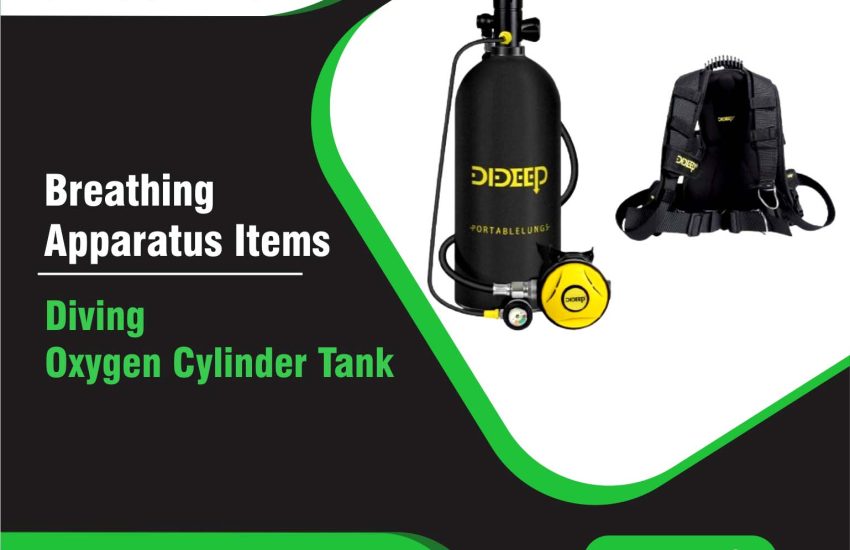Diving Oxygen Cylinder Tank is a critical piece of scuba diving equipment that provides the necessary supply of oxygen for divers during underwater exploration. Whether you’re a professional diver or a recreational enthusiast, having a reliable oxygen tank is essential for ensuring a safe and enjoyable diving experience. In this article, we will explore the specifications, key features, and benefits of diving oxygen cylinder tanks, along with detailed keywords for optimal search engine visibility.
Key Features and Specifications of Diving Oxygen Cylinder Tanks
High-Quality Construction for Durability
Diving oxygen cylinders are typically made from strong materials such as aluminum or steel, ensuring they are lightweight yet durable enough to withstand the pressures of deep-water environments. These materials are corrosion-resistant, ensuring the longevity of the tank, even in harsh saltwater conditions. Aluminum cylinders are more common due to their lighter weight, while steel cylinders are typically more robust and can withstand higher pressure.
Cylinder Capacity and Pressure Rating
Diving oxygen cylinders come in different sizes, with the most common capacities ranging from 10 to 80 cubic feet (300 to 2,300 liters). The pressure rating of the tank is usually 200 to 300 bars (or approximately 2,900 to 4,350 psi), depending on the tank’s design and capacity. The higher the pressure rating, the more oxygen the tank can hold, allowing for longer dive durations and deeper explorations.
Easy to Use and Transport
Diving oxygen cylinders are designed for ease of use, with a simple valve system that allows divers to control the flow of oxygen during their dives. The cylinder’s lightweight construction also makes it easy to transport and carry to dive sites. Many tanks also feature ergonomic handles and comfortable straps, making it easier for divers to move them when needed.
Safety Features for Maximum Protection
Safety is a top priority when using a diving oxygen cylinder tank. These tanks are equipped with built-in safety mechanisms, such as burst disc valves, to prevent over-pressurization. The cylinders are also designed with reinforced metal valves that are resistant to corrosion and damage, ensuring safe usage during dives.
Compatibility with Dive Equipment
Diving oxygen cylinder tanks are compatible with a variety of dive equipment, such as regulators, pressure gauges, and dive computers. These tanks provide a consistent and reliable source of oxygen to ensure divers have the air they need throughout the dive, regardless of the depth or length of the dive.
Detailed Specifications of Diving Oxygen Cylinder Tanks
- Material: Aluminum or steel construction, corrosion-resistant coating
- Capacity: Ranges from 10 to 80 cubic feet (300 to 2,300 liters)
- Pressure Rating: 200-300 bars (2,900-4,350 psi)
- Valve Type: Standard valve, DIN valve, or Yoke valve (depending on the model)
- Weight: Varies by size and material, typically between 10 to 40 pounds (4.5 to 18 kg)
- Dimensions: Varies with tank capacity (usually 12 inches in diameter and 25-35 inches in height)
- Safety Features: Burst disc valves, reinforced metal valves, corrosion-resistant coatings
- Certification: Meets diving standards, such as DOT (Department of Transportation) for the US or CE for Europe
Benefits of Using a Diving Oxygen Cylinder Tank
Ensures Safe Breathing Underwater
The primary purpose of a diving oxygen cylinder is to provide a steady supply of oxygen for divers while submerged. The tank allows divers to breathe freely and safely at varying depths, reducing the risk of drowning and ensuring optimal oxygen levels throughout the dive.
Extended Dive Times and Greater Depths
A larger capacity tank can offer a longer dive time, which is ideal for divers who want to explore more extensive underwater areas. The high-pressure rating ensures that divers can go deeper without running out of air prematurely, making it ideal for advanced and professional divers.
Improved Comfort and Safety
Diving with a reliable oxygen tank improves overall comfort and safety by ensuring an uninterrupted air supply. Divers can focus on their exploration without worrying about running out of oxygen or encountering dangerous situations due to a lack of air.
Versatility for Different Diving Needs
Diving oxygen cylinder tanks are available in various sizes to meet different diving needs, from short recreational dives to long, deep exploratory dives. This versatility ensures that divers can select the ideal tank for their specific requirements.
Cost-Effective and Durable Equipment
Diving oxygen cylinders are durable and built to last, making them a cost-effective investment for frequent divers. Regular maintenance and proper care can ensure the tank’s longevity, saving divers the cost of constant replacements.
How to Choose the Right Diving Oxygen Cylinder Tank
When selecting a diving oxygen cylinder, consider the following factors:
- Tank Capacity: Choose a tank size based on the dive’s planned duration and depth. Larger tanks offer longer dive times, while smaller tanks are more lightweight and portable.
- Material: Aluminum cylinders are lighter and corrosion-resistant, while steel cylinders are heavier but offer higher pressure ratings.
- Pressure Rating: Ensure the tank has the necessary pressure rating for your diving activities. Higher pressure ratings allow for longer dives.
- Valve Type: Different valve types (standard, DIN, or yoke) are available, so ensure compatibility with your regulator system.
- Certification: Ensure the tank meets necessary safety certifications like DOT or CE to comply with safety standards.
Conclusion
A diving oxygen cylinder tank is an essential piece of equipment for any scuba diver, ensuring safe breathing underwater while providing the necessary air supply for both recreational and professional divers. With varying sizes, capacities, and materials, these tanks are designed for safety, comfort, and efficiency. Whether you’re planning short recreational dives or deep-sea explorations, choosing the right diving oxygen cylinder will significantly enhance your diving experience.


